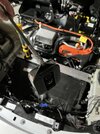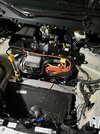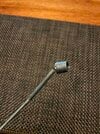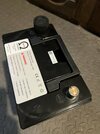I would like to ask folks with Ohmmu experience what they would suggest for my situation...
I have a 2018 Model 3 Performance and purchased/installed an Ohmmu battery last October. Partly to head off a failure of the original 12v battery, and partly to get more life without worrying about a replacement lead-acid 12v battery. I'm in the fsd beta, so my software path is slightly different from the general rank and file. Everything had been working fine for about a year.
I have been on a 3,000 mile road trip. Halfway through the trip, a software version became available (2022.20.18), so I connected to wifi and downloaded it. Within about 6 or 8 hours, I received alerts for vc_front_a182, a192 and a402. I read the knowledge base article on Ohmmu's website and sent them a note. They responded back with a scripted message that essentially had the same information in the website article.
It was about time to come back home, and I was nervous. I didn't have the tools to do a reset on the battery, but I didn't have another software update waiting to install anyways, so I decided to tough it out and try to get home. All the way home, I didn't let the car go to sleep. I left it in camp mode all the time when not driving (I had no idea whether this would be successful or work). I figured even though Ohmmu said the battery would most likely not die, I didn't want to take any chances since we had to drive in some pretty remote territory to get back home. It seemed to work okay with camp mode, etc. although we lost USB port functionality (can't charge our phones) and it wouldn't pre-heat before charging (or at least display the message). It also required extra charging since it burned up more energy at night, and required some additional planning. My SO wasn't too happy about the whole thing.
So now what? After driving the car somewhat crippled back home for over 1,500 miles and having to worry that it may conk out at any moment if I'm not careful with the camp mode, I have lost faith in the Ohmmu battery product. I'm tempted to buy a replacement lead-acid replacement from Tesla and try to do a pro-rated return to Ohmmu or get an upgraded replacement from Ohmmu that I can just sell to cash out (but I haven't approached them with either of these two ideas yet).
Any ideas or suggestions? Thanks, I appreciate it....






